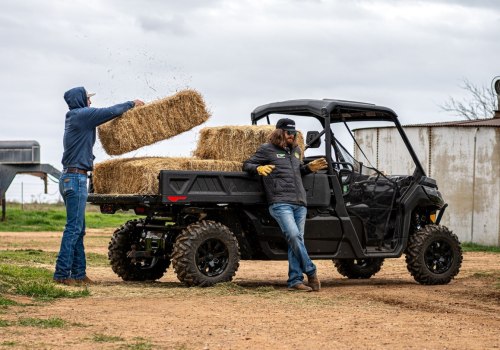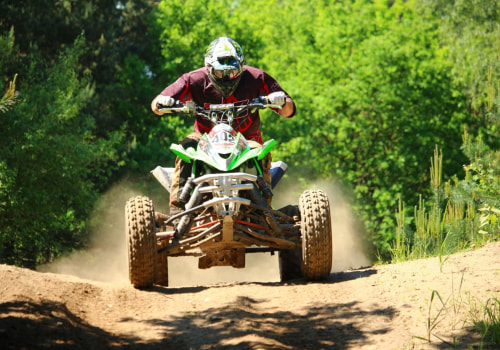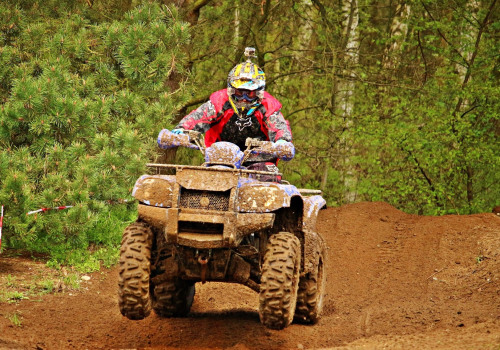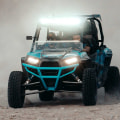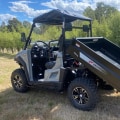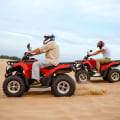Always wear a helmet and other protective equipment, such as eye protection, boots, gloves, long pants and a long-sleeved shirt when riding an all terrain vehicle (ATV). Never travel with more passengers than seats, as most off-road vehicles are designed for a single driver. Passengers under 16 should only drive age-appropriate youth model off-road vehicles and never adult all-terrain vehicles. Driving an ATV requires protection for the head, eyes, hands and feet, flying debris, or contact with foliage.
Knowing what to wear and how to use it can make you feel more comfortable when driving and reduce the chance of being injured. As an expert in ATV safety, I strongly recommend never driving an ATV or riding as a passenger without a quality motorcycle helmet, eye protection, boots, gloves, long pants, and a quality long-sleeved shirt or jacket. Protective equipment is a must when operating off-road vehicles. Whether driving class 1 or class 2 off-road vehicles, all operators and passengers under 18 must wear DOT-certified helmets. One of the most common violations that conservation officers see is that people under the age of 18 do not wear helmets, especially on larger Class 2 vehicles.
The helmet is probably the most important safety equipment for driving an ATV. At a minimum, you need a helmet with a Department of Transportation (DOT) certification sticker. Helmets can also meet other standards, such as those established by the SNELL Foundation. The more standards that are met, the safer the helmet tends to be. Studies have shown that using a helmet while driving an ATV reduced the rate of traumatic brain injuries.
Off-road vehicle safety legislation, when enforced, also reduced morbidity and mortality. However, compliance with laws is often low, possibly due to poor enforcement. We recommend wearing a helmet when driving an ATV to reduce traumatic brain injury. We conditionally recommend implementing off-road vehicle safety legislation as a means of reducing injuries caused by off-road vehicles, keeping in mind that enforcement must go hand in hand with enactment to ensure compliance. Riders should always wear motorcycle-type helmets approved by the Department of Transportation. Wearing a helmet can prevent or greatly reduce the severity of a head injury in a crash.
More research is needed on the effectiveness of several safety measures, especially since newer off-road vehicles have more power and speed and are therefore riskier. Unless you opt for a full-face motorcycle helmet, your eyes will be exposed to dust, rocks and other debris during your quadbike trips. Analyzing the inpatient population may underestimate helmet use by off-road vehicle drivers, as cyclists who wear helmets may be less likely to need hospital care. Otherwise, all-terrain vehicle cyclists in the helmetless cohort who only needed a medical evaluation to detect traumatic brain injury might not have been included in the study if a helmet had prevented their traumatic brain injury.
In addition, by extrapolating several other fields of motor vehicle injury prevention, properly publicized and enforced legislation effectively improves outcomes. While some children may be properly adjusted to adult all-terrain vehicles, 98% of deaths and injuries in this age group occur in adult vehicles. While the power and speed of these vehicles have increased over time, advances in off-road vehicle safety have been rare. Likewise, look for special features such as a reinforcement around the ankle where the leg will rub against the ATV.
Young cyclists should also be able to move their weight from side to side and back and forth while maintaining their balance. Protective equipment is currently being marketed for off-road vehicle drivers such as vests, boots, shin guards and shoulder knee and elbow pads. A consultation was conducted in MEDLINE PubMed Cochrane Library and Embase to determine injuries caused by an ATV. Children under 16 who can drive off-road vehicles should drive a smaller model with speeds limited accordingly.
